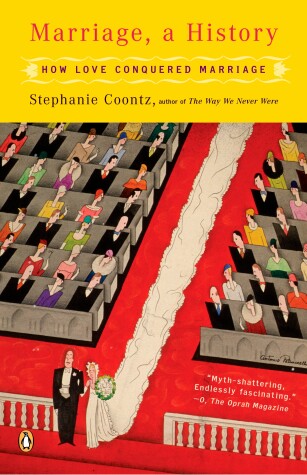Reviewed by empressbrooke on
Of note for the pearl clutchers, the marriage of the 1950s is noted to be an "unprecedented marriage system" that "was the climax of almost two hundred years of continuous tinkering with the male protector love-based marital model invented in the late eighteenth century. That process culminated in the 1950s in the short-lived pattern that people have since come to think of as traditional marriage."
Prior to the eighteenth century, marriage was missing both the love and the male protector bits. They were essentially working partnerships needed to carry out activities of daily living involved in running a self-sufficient household. The individuals in the marriage had essentially no say in who they married, as their extended family and community arranged people into matches that benefited larger society.
While I've always been aware that our traditions are not as traditional as we think, and that marriage was quite different in the past than it is now, this book really made clear not only what marriage has looked like over time, but also WHY it changed each time that it did. Every change, including the ones in the 1950s, makes complete sense when placed in the context of the larger societal shifts (economic, legal, political, medical, etc) taking place. The marriage of the 1950s was a direct result of the the end of the Depression, the subsequent end of WWII, and the new mass market consumer conveniences such as the washing machine. The author's explanation of how these factors led to the Ozzie and Harriet years make it all sound so reasonable that they ended up there. And it also makes it unquestionable that we can't return to it. The author has clearly done her research, and despite what another review states, the book has 100 pages of citations at the end.
It struck me as so important to understand this history before deciding anything about marriage today - from opinions on gay marriage to the personal choice to get married. I found the discussion at the end of the book very poignant. Essentially, the author posits that marriage today is much more fragile than it's ever been, but also more deeply satisfying and intimate than it's ever been. We're once again redefining marriage and demanding more from it, which has the result of people being more hesitant to enter it and quicker to leave it when it doesn't meet our newer standards.
Highly recommended.
Reading updates
- Started reading
- 22 June, 2013: Finished reading
- 22 June, 2013: Reviewed
